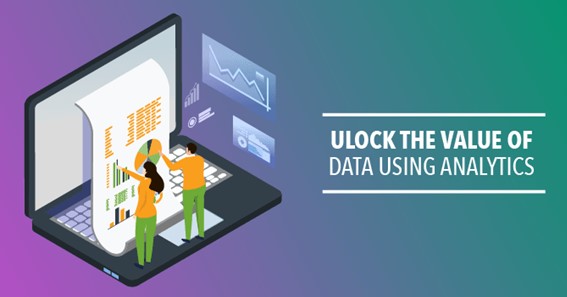Advantages of Using the Best Tool for Data Analytics
Data analytics is becoming an increasingly important part of doing business today, and having the right tool for the job is essential for success.
The best data analytics tool in Singapore can help organizations make sense of their data, uncover trends, and find new insights to inform decisions. Here are some of the key advantages of using the best tool for data analytics:
- Improved Efficiency: The best tools for data analytics are designed to automate many processes and streamline workflows associated with collecting, analyzing, and reporting on large volumes of data. This helps reduce manual labor costs while improving accuracy in findings and reducing tedious tasks like manual entry or analysis that often take longer than expected.
- Increased Insight: By leveraging advanced algorithms to analyze vast amounts of disparate data sources at once, the best tools can provide a more complete picture than traditional methods alone could provide. This allows businesses to gain deeper insights into customer behaviors or market trends that would otherwise be difficult or impossible to identify without such powerful tools at their disposal.
- Easier Reporting: With all the available options out there it can be difficult to know which one is right for you when it comes time to generate reports from your collected datasets – but not with a high-quality solution that offers streamlined report generation.
Types of Data Analytics Tools
Data analytics is rapidly becoming an integral part of modern businesses, allowing them to make decisions backed by evidence-based insights. To gain these insights, however, businesses need the right tools. This article will cover the various types of data analytics tools available and how they can be used to unlock valuable insights from data.
- The first type of data analytics tool is descriptive analysis. These tools provide a general overview of a dataset, allowing users to understand what is happening in their systems or processes and identify opportunities for improvement. Descriptive analysis typically relies on visualizations such as charts, graphs and tables to easily summarize large datasets into meaningful information that can be quickly absorbed by users.
- The second type of data analytics tool is predictive analysis. Predictive analytics uses machine learning algorithms to identify patterns in datasets that are not immediately visible through descriptive analysis alone. By applying predictive algorithms, businesses can gain a better understanding of future trends and behaviors based on historical patterns in their datasets.
- The third type of data analytics tool is prescriptive analysis which provides recommendations for business actions based on both descriptive and predictive analyses. Prescriptive analytics combines machine learning algorithms with other techniques such as game theory and optimization techniques to help organizations determine the best course of action given certain conditions.
Click here – Achieve Home Ownership Through Affordable Home Loans
Factors to Consider When Choosing a Data Analytics Tool
Data analytics is becoming more and more important for businesses to understand their customers, market trends, and to make better decisions. With so many data analytics tools available, it can be difficult to choose the right one for your business. Here are some factors you should consider when choosing a data analytics tool:
- Cost: The cost of a data analytics tool will vary depending on the features and capabilities it offers. You’ll need to decide how much you can afford to spend on a data analytics tool before making your decision.
- Ease of Use: Some data analytics tools are complex and require extensive training in order to use them effectively while others may be easier to learn and use right away. Consider how sophisticated or intuitive the user interface is before making a purchase decision as this could affect how quickly you can get up-and-running with the software.
- Security: It’s important that any data analytic tool you choose has strong security measures in place so that sensitive customer information isn’t exposed or vulnerable to malicious attacks from outside sources. Research any security protocols each potential solution offers before making your final selection.
Popular Data Analytics Tools
Data analytics is increasingly becoming an important tool for businesses, organizations and individuals alike. With the help of data analytics tools, companies can gain valuable insights into their operations, customers and market trends. Popular data analytics tools are quickly becoming essential for businesses of all sizes to remain competitive in today’s rapidly changing marketplace.
One popular data analytics tool is Microsoft Power BI (Business Intelligence). This comprehensive suite of business intelligence software enables users to analyze large datasets in order to uncover insights about their business or organization. Through the use of interactive visuals, Power BI allows users to quickly create dashboards and reports in order to monitor key performance indicators (KPIs) such as customer engagement or sales performance over time. Additionally, Power BI offers a variety of machine learning capabilities that allow users to uncover previously unknown patterns within their data sets.
Another popular data analytics tool is Tableau Software’s Tableau Desktop platform. Like Power BI, Tableau Desktop helps users explore their data visually with interactive charts and graphs that are easy-to-understand yet powerful enough for advanced analysis tasks like predictive modeling and geospatial analysis. With its drag-and-drop interface and built-in statistical functions, Tableau Desktop makes it easy for anyone — regardless of technical expertise
Click here – Step-by-Step Guide in Installing a Kitchen Floor
Conclusion
In conclusion, the best tool for data analytics depends on the specific needs of your project. For example, if you need to analyze large datasets with complex algorithms, then a powerful programming language such as Python or R may be ideal. On the other hand, if you are looking for more user-friendly visualization tools or easy-to-use dashboards, then a business intelligence platform like Tableau or PowerBI may be more suitable. Ultimately, it is important to consider all of your requirements when choosing the right tool for data analytics.

